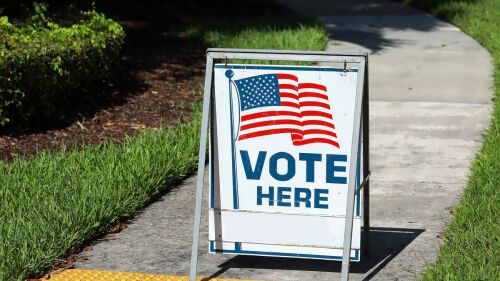First responders are the people who show up when everything falls apart — the ones running toward smoke, chaos and danger while the rest of us move away. They don’t do it for recognition, but that doesn’t mean they don’t need it. Gratitude can’t replace funding or proper staffing, but it can go a long way toward letting responders know their work matters.
Below are 11 actionable ways to express gratitude and back first responders in your area. [Fill out the form on this page to download a copy of the list you can share with your community members.]
1. Show up and lend a hand
Support starts with presence. Volunteer with your local fire department, EMS squad or emergency management agency. Not everyone can ride an engine or an ambulance, but many departments need help with community outreach, CPR classes, social media, logistics or fundraising. Your time and skill set can be as valuable as any check.
2. Give directly — and intentionally
Departments often stretch limited budgets to cover gear, training, vehicle maintenance and wellness programs. Donations targeted to those needs can have an immediate impact.
Coordinate a community fundraiser or promote a department’s verified online donation page. Even small financial contributions can add up to new radios, turnout gear or defibrillators that keep responders safer and more effective.
3. Celebrate them in public
A public thank-you makes a private burden feel lighter. Host or attend an appreciation event at the station, school or community park. Invite families, share stories, offer lunch or dessert — and most importantly, listen to responders talk about what they actually need from the community.
Tie your event to National First Responders Day (Oct. 28) or local milestones, like a department anniversary or public safety open house.
4. Back them during the hard calls
When disaster hits — a structure fire, tornado, mass-casualty crash — responders push themselves past exhaustion. Coordinating donated meals, water or relief supplies with emergency leaders or local departments shows tangible support in those moments.
Partner with local businesses, faith groups or civic clubs to help sustain crews working long hours in extreme conditions.
5. Advocate for their future
Gratitude matters. So does policy. Speak up for sustainable public safety budgets, adequate staffing levels, mental health resources and retirement protections.
Attend city council or county meetings. Write letters. Vote for candidates who understand emergency services aren’t optional line items — they’re essential infrastructure.
6. Invest in education and the next generation
Scholarships or training grants for future firefighters, EMTs and paramedics build long-term strength in the profession. Departments and community foundations can partner to create funds for recruits, or for the children of fallen or injured responders.
These programs send a message that the community values both service and those who dedicate their lives to it.
7. Use your platform to recognize their work
If you run a business, manage communications or lead a civic group, use your channels to highlight local responders.
Create a newsletter, podcast segment or social media feature that introduces the public to the people behind the uniform — their training, their challenges, their impact. Awareness leads to appreciation, and appreciation drives support.
8. Make appreciation visible
Signs, flags, decals, murals, lights — symbolic gestures matter. When entire towns “go red” or display banners thanking first responders, it reinforces civic pride.
Businesses can offer discounts, restaurants can sponsor meals, and schools can display artwork or host thank-you assemblies. Public gratitude sets a tone that ripples through a community.
9. Keep it personal
In the age of hashtags, a handwritten note still means something. Encourage kids, students or community groups to write cards thanking local responders. Drop them off at the station or mail them.
When someone takes the time to write, responders notice — and remember.
10. Move for the mission
Join or sponsor charity runs, stair climbs or memorial rides that raise funds for first responder causes.
Events like these unite communities, honor fallen responders and generate resources for peer support, rehab or survivor programs.
11. Keep the conversation going
Public safety appreciation shouldn’t be limited to a single day.
Use social media to share posts during Fire Prevention Week, EMS Week or National Police Week. Attend station tours and safety events. Ask how your neighborhood can collaborate with local responders on prevention, preparedness or mental health initiatives.
The more connected a community is to its responders, the stronger and safer it becomes.
Bonus: Make it a habit
Showing appreciation isn’t about grand gestures — it’s about consistent recognition that the people answering 911 calls are human beings with families and have immense pride in what they do. Small, steady acts of gratitude help them feel seen, supported and valued.
Fill out the form on this page to download a copy of these tips to share with your community.









